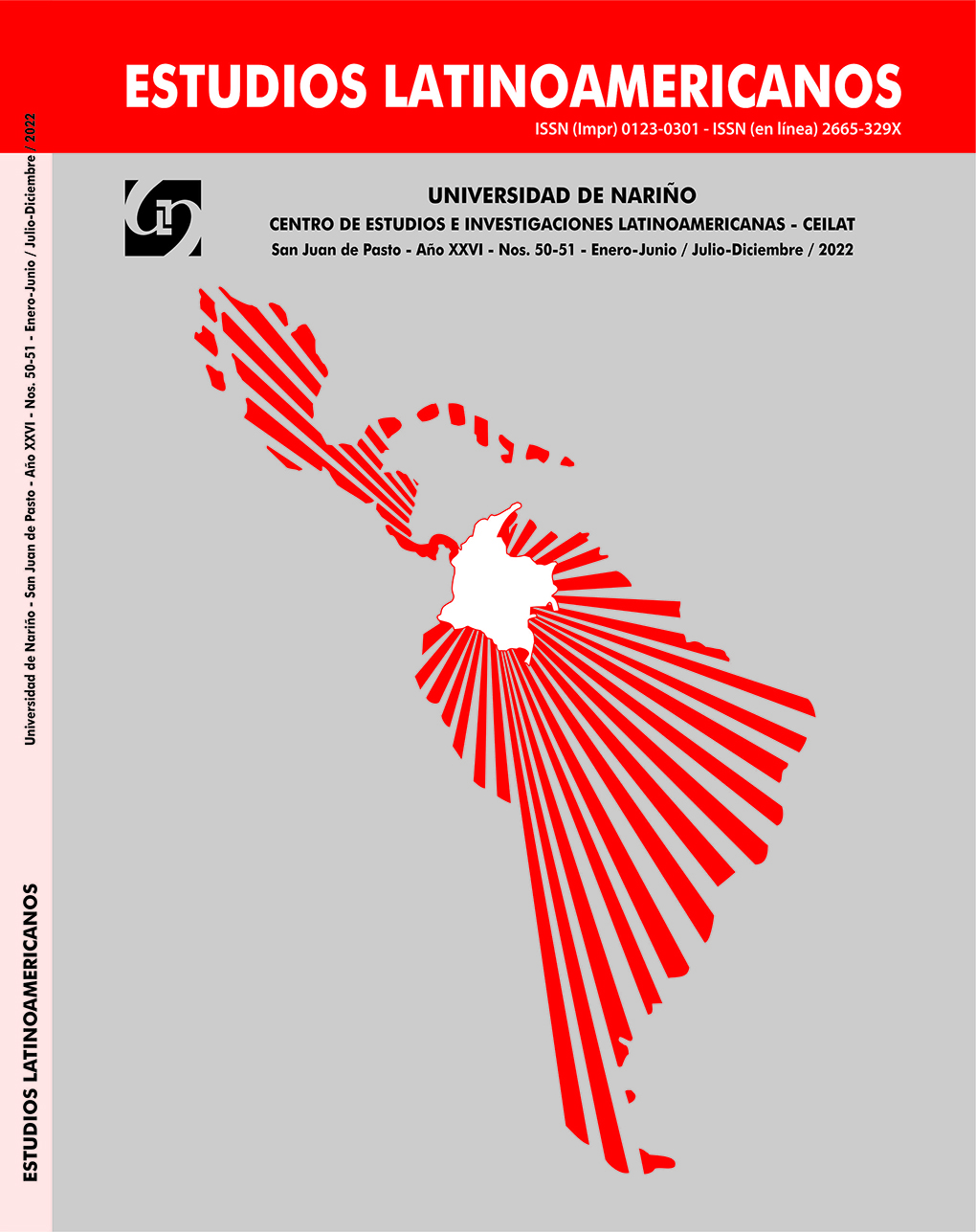I the supreme, pre-study notes
DOI:
https://doi.org/10.22267/rceilat.225051.113Keywords:
Literary reading, plurality, foundationsAbstract
This paper seeks to respond to some extent to the difficulty faced by the university student when undertaking the study of a literary text. In the field of these investigations, many Ways of understanding literature have been experimented with, such as the sociological, the psychological, the philosophical, the symbolic, the stylistic and others; the scope of these works is hardly made explicit, but the cautious reader is aware of the partial vision they offer of the text, in addition to the fact that it is subject to permanent scrutiny, given that a single or dominant vision is no longer admitted and what prevails now a day is the
plurality of readings. However, for this diversity of readings to be considered, it is necessary to explain, at least, the methodology deployed, the sources of support and the theoretical bases that it postulates. In these sense, we have left behind the merely impressionistic critique and also the pretense of offering a literal and scientific vision of the text. So, the space for reading from our own circumstances is open.
Downloads
References
Andreau, Jean L. (1976). Cuadernos del norte. Amsterdam.
Roa Bastos, Augusto (1983). Yo el Supremo, Milagros Ezquerro (ed.). Madrid: Cátedra, 11ª edición, 2018.
Roa Bastos, Augusto (1978). (Comp.) Las culturas condenadas. México: Siglo XXI.
Roa Bastos, Augusto (1982) Fils d’Homme, “Prólogo”, trad. del español paraguayo de Iris Giménez. Paris: Pierre Belfond.
A Valdés, Ignacio Rodríguez, (1973) “Hijo de hombre, el mito como fuerza social”, en: Homenaje a Roa Bastos. Nueva York: Ed. de Helmy F. Giacomán.
Barreiro, R. (1976). “Trayectoria narrativa de A. Roa Bastos”, Texto Crítico, Veracruz, 4.
Chardin, Ph. (2002). Musil e la letteratura europea, Turín: UTET Librería.
Cadogan, León (1959). Ayvu Rapita. Textos míticos de los mbyá-guaraní del Guaivá, Sao Paulo, Facultad de Filosofía.
Fuentes, C. (1969) La nueva novela hispanoamericana. México: Cuadernos de Joaquín Mortiz, 5ª ed. 1976.
Höffe, O. (2010). Kant’s Critique of pure reason. The foundation of modern philosophy. Dordrecht, Heidelberg, London, New York: Springer.
Karl, Frederick R. (2001). American Fictions 1980-2000: Whose America Is It Anyway, Bloomington: Xlibris.
Le Clair (1989). The Art of Excess: Mastery in Contemporary American Fiction. Illinois: Urbana, University of Illinois Press.
Loveluck, J. (1976). Novelistas hispanoamericanos de hoy. Madrid: Taurus.
Musil, R. L’uomo senza qualità, trad, it. de A. Rho, Turín, Einaudi, vol. I 1957, vol. II 1958, vol. III 1962.
Musil, R. (1980). Diari, 1899-1941. Trad. it. de E. De Angelis, Turín: Einaudi.
Musil, R. (1994). Il letterato e la letteratura. Milán: Guerini e Associati.
Musil, R. (1995). Saggi e lettere. Trad. it. de A. Casalegno y otros, 2 vols. Turín: Einaudi.
Rodríguez Alcalá, H. (1973). “A. Roa Bastos y El trueno entre las hojas”, en: El cuento hispanoamericano ante la crítica. Madrid: Ed. Enrique Pupo Walker.
Rorty, R. (1991). Objetividad, relativismo y verdad, Barcelona: Paidós, 1996.
Shaw, Donald L. (1999). Nueva narrativa hispanoamericana. Madrid: Cátedra.
Shklovskij, Viktor (1929). Una teoría della prosa. L’ arte come artificio, trad. it. de Maria Olsufieva, Bari, De Donato, 1966.
White, H., (1973). Metahistoria. La imaginación histórica en la Europa del siglo XIX. México: FCE, primera reimpresión 2001.
Published
How to Cite
Issue
Section
License
Copyright (c) 2022 ESTUDIOS LATINOAMERICANOS

This work is licensed under a Creative Commons Attribution-NonCommercial-NoDerivatives 4.0 International License.
Otras métricas:











_(2).png)








